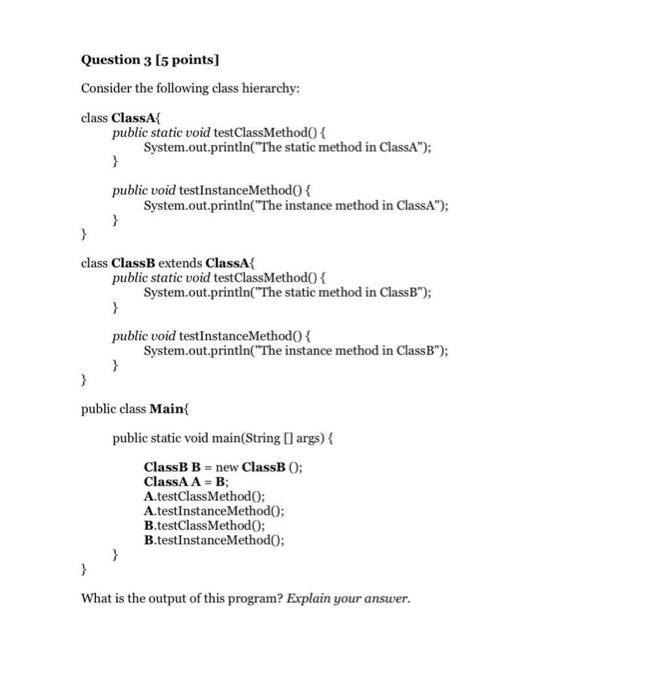Answered step by step
Verified Expert Solution
Question
1 Approved Answer
Consider the following class hierarchy: class ClassA{ public static void testClassMethod() { System.out.println(The static method in ClassA); } public void testInstanceMethod() { } System.out.println(The

Consider the following class hierarchy: class ClassA{ public static void testClassMethod() { System.out.println("The static method in ClassA"); } public void testInstanceMethod() { } System.out.println("The instance method in ClassA"); } class ClassB extends ClassA{ public static void test ClassMethod() { System.out.println("The static method in ClassB"); } public void testInstanceMethod() { } System.out.println("The instance method in ClassB"); } public class Main public static void main(String[] args) { Class B B = new ClassB (); ClassA A = B; A.testClass Method(); A.testInstance Method(); B.testClass Method(); B.testInstanceMethod(); } What is the output of this program? Explain your answer.
Step by Step Solution
★★★★★
3.44 Rating (154 Votes )
There are 3 Steps involved in it
Step: 1
The detailed answer for the above question is provided below ANSWER NOTE Please save program named a...
Get Instant Access to Expert-Tailored Solutions
See step-by-step solutions with expert insights and AI powered tools for academic success
Step: 2

Step: 3

Ace Your Homework with AI
Get the answers you need in no time with our AI-driven, step-by-step assistance
Get Started


